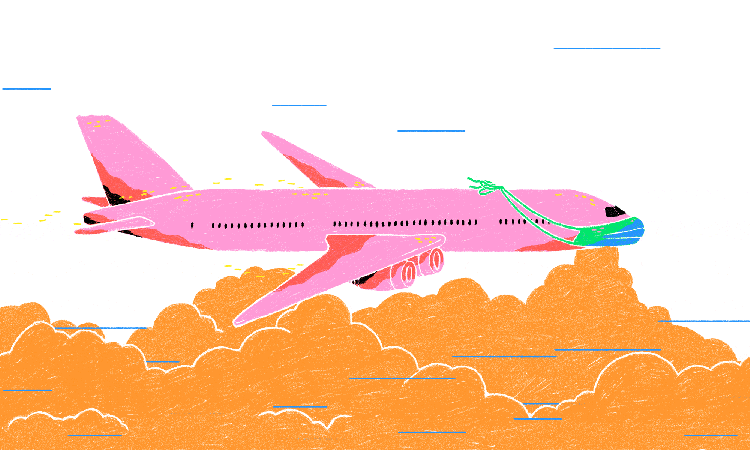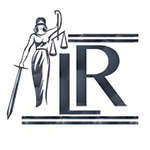If You Decide to Travel
If you do decide to travel, be sure to take these steps during your trip to protect yourself and others from COVID-19:
- Check travel restrictions before you go.
- Get your flu shot before you travel.
- Bring your mask and hand sanitizer.
- Don’t travel if your sick.
- Wear a mask to keep your nose and mouth covered when in public settings.
- Avoid close contact by staying at least 6 feet apart (about 2 arm lengths) from anyone who is not from your travel group.
- Wash your hands often or use hand sanitizer (with at least 60% alcohol).
- Avoid contact with anyone who is sick.
- Avoid touching your eyes, nose, and mouth.
Consider testing
Testing could improve traveler safety.
The safest thing to do is to stay home, but if you do decide to travel, testing can help you do so more safely. You and your travel companions (including children) may feel well and not have any symptoms, but you can still spread COVID-19 to others in busy travel environments like in airports, and bus and train stations. You can also spread it to family, friends, and your community after travel. Testing does not eliminate all risk, but it can help make travel safer.
- If you are traveling, consider getting tested with a viral test 1-3 days before your trip. Also consider getting tested with a viral test 3-5 days after your trip and reduce non-essential activities for a full 7 days after travel, even if your test is negative. If you don’t get tested, consider reducing non-essential activities for 10 days after travel.
- Keep a copy of your test results with you during travel; you may be asked for them.
- Do not travel if you test positive; immediately isolate yourself, and follow public health recommendations.
- You may have been exposed to COVID-19 on your travels. You and your travel companions (including children) may pose a risk to your family, friends, and community. Regardless of where you traveled or what you did during your trip, take these actions to protect others from getting COVID-19 for 14 days after travel:
- Stay at least 6 feet/2 meters (about 2 arm lengths) from anyone who did not travel with you, particularly in crowded areas. It’s important to do this everywhere — both indoors and outdoors.
- Wear a mask to keep your nose and mouth covered when you are in shared spaces outside of your home, including when using public transportation.
- If there are people in the household who did not travel with you, wear a mask and ask everyone in the household to wear masks in shared spaces inside your home.
- Wash your hands often or use hand sanitizer with at least 60% alcohol.
- Avoid being around people who are at increased risk for severe illness.
- Watch your health: Look for symptoms of COVID-19, and take your temperature if you feel sick.
Traveling Abroad? Check CDC’s COVID-19 Travel Recommendations by Destination before planning your trip.
Anticipate Your Travel Needs
For 14 days before you travel, take everyday precautions like wearing masks, social distancing, and washing your hands. Avoid the following activities that can put you at higher risk for COVID-19:
- Going to a large social gathering like a wedding, funeral, or party.
- Attending a mass gathering like a sporting event, concert, or parade.
- Being in crowds like in restaurants, bars, fitness centers, or movie theaters.
- Being on trains, buses, in airports, or using public transportation.
- Traveling on a cruise ship or river boat.
- Bring a mask to wear in public places and on public transportation.
- Pack hand sanitizer with at least 60% alcohol. Keep this within reach.
- Bring enough of your medicine to last you for the entire trip.
- Pack food and water in case restaurants and stores are closed, or if drive-through, take-out, and outdoor-dining options aren’t available.
- If you are considering cleaning your travel lodgings, see CDC’s guidance on how to clean and disinfect.
- Consider getting tested with a viral test 1-3 days before you travel. Keep a copy of your test results with you during travel; you may be asked for them.
- Do not travel if you test positive; immediately isolate yourself, and follow public health recommendations.
Check Travel Restrictions
State, local, and territorial governments may have travel restrictions in place, including testing requirements, stay-at-home orders, and quarantine requirements upon arrival. For up-to-date information and travel guidance, check the state and local health department where you are, along your route, and where you are going. Prepare to be flexible during your trip as restrictions and policies may change during your travel. Follow all state, local, and territorial travel restrictions.
If traveling by air, check if your airline requires any health information, testing, or other documents. Local policies at your destination may require you to be tested for COVID-19. If you test positive on arrival, you may be required to isolate for a period of time.
After You Travel
You may have been exposed to COVID-19 on your travels. You may feel well and not have any symptoms, but you can still spread the virus to others. You and your travel companions (including children) may pose a risk to your family, friends, and community after your travel.
- Consider getting tested with a viral test 3–5 days after your trip and reduce non-essential activities for a full 7 days after travel, even if your test is negative. If you don’t get tested, consider reducing non-essential activities for 10 days.
- If your test is positive, isolate yourself to protect others from getting infected.
Also take these actions for 14 days after you return from travel to protect others from getting COVID-19:
- Stay at least 6 feet/2 meters (about 2 arm lengths) from anyone who did not travel with you, particularly in crowded areas. It’s important to do this everywhere — both indoors and outdoors.
- Wear a mask to keep your nose and mouth covered when you are in shared spaces outside of your home, including when using public transportation.
- If there are people in the household who did not travel with you, wear a mask and ask everyone in the household to wear masks in shared spaces inside your home.
- Wash your hands often or use hand sanitizer with at least 60% alcohol.
- Avoid being around people who are at increased risk for severe illness.
- Watch your health: Look for symptoms of COVID-19, and take your temperature if you feel sick.
Follow all state and local recommendations or requirements after travel.
Traveling Abroad? Check CDC’s COVID-19 Travel Recommendations by Destination before planning your trip.
Considerations for Types of Travel
Travel increases your chances of spreading and getting COVID-19. Some travel activities, like the transportation you choose and where you stay, can increase your risk of getting COVID-19. Know your travel risk. Your chances of getting COVID-19 while traveling also depends on whether you and those around you take steps to protect yourselves and others, such as wearing masks and staying 6 feet away from people outside your travel group (social distancing). Airports, bus stations, train stations, and rest stops are all places travelers can be exposed to the virus in the air and on surfaces. These are also places where it can be hard to social distance. In general, the longer you are around a person with COVID-19, the more likely you are to get infected.
Air travel
Air travel requires spending time in security lines and airport terminals, which can bring you in close contact with other people and frequently touched surfaces. Most viruses and other germs do not spread easily on flights because of how air is circulated and filtered on airplanes. However, social distancing is difficult on crowded flights and sitting within 6 feet of others, sometimes for hours, may increase your risk of getting COVID-19. How you get to and from the airport, such as with public transportation and ridesharing, can also increase your chances of being exposed to the virus.
Bus or train travel
Traveling on buses and trains for any length of time can involve being in crowded terminals and sitting or standing within 6 feet of others, which may increase your risk of getting COVID-19. If you choose to travel by bus or train, learn what you can do to protect yourself on public transportation.
Car travel
Making stops along the way for gas, food, or bathroom breaks can put you and your traveling companions in close contact with other people and frequently touched surfaces.
RV travel
You may have to stop less often for food or bathroom breaks, but RV travel usually means staying at RV parks overnight and getting gas and supplies at other public places. These stops may put you and those with you in the RV in close contact with others.
Learn more about how to protect yourself from COVID-19 on different types of transportation.How Are Transportation Companies Protecting Customers from COVID-19?
When planning travel, you may want to check transportation companies’ websites to see what they are doing to protect customers from COVID-19. Things to look for include:
- Requiring people to wear a mask.
- Promoting social distancing.
- Using online or contactless reservations and check-in.
- Using contactless payment.
- Enhanced cleaning procedures.
Considerations for Staying with Family or Friends
If you, someone you live with, or anyone you plan to visit is at increased risk for severe illness from COVID-19, consider staying in a separate accommodation like a hotel, guest house, or short-stay rental.
Tips for staying overnight or hosting overnight guests
- Be prepared. Know what you will do if you or someone else becomes sick during the visit. What are your plans for isolation, medical care, basic care, and travel home when it is safe to do so?
- Wear masks while in shared spaces inside the house. Masks may be removed for eating, drinking, and sleeping, but individuals from different households should stay at least 6 feet away from each other at all times.
- Wash hands with soap and water for at least 20 seconds, especially upon arrival.
- Visitors should launder clothing and masks and stow luggage away from common areas upon arrival.
- Improve ventilation by opening windows and doors or by placing central air and heating on continuous circulation.
- Spend time together outdoors. Take a walk or sit outdoors at least 6 feet apart for interpersonal interactions.
- Avoid singing or shouting, especially indoors.
- Treat pets as you would other human family members – do not let pets interact with people outside the household.
- Monitor hosts and guests for symptoms of COVID-19 such as fever, cough, or shortness of breath.
Tips to avoid getting and spreading COVID-19 in common travel situations:
In public:
- Wear a mask in public settings, including on public transportation and in transportation hubs such as airports and stations.
- Stay at least 6 feet (about 2 arm lengths) from anyone who is not from your travel group.
Bathrooms and rest stops:
- Wash your hands with soap and water for at least 20 seconds after using the bathroom and after you have been in a public place.
- If soap and water are not available, use a hand sanitizer that contains at least 60% alcohol. Cover all surfaces of your hands and rub them together until they feel dry.
Getting gas:
- Use disinfecting wipes on handles and buttons at the gas pumps before you touch them (if available).
- After fueling, use a hand sanitizer with at least 60% alcohol. When you get to your destination, wash your hands with soap and water for at least 20 seconds.
Hotels and accommodations:
Food stops:
- The safest option is to bring your own food. If you don’t bring your own food, use drive-through, delivery, take-out, and curb-side pick-up options.




Leave a Reply